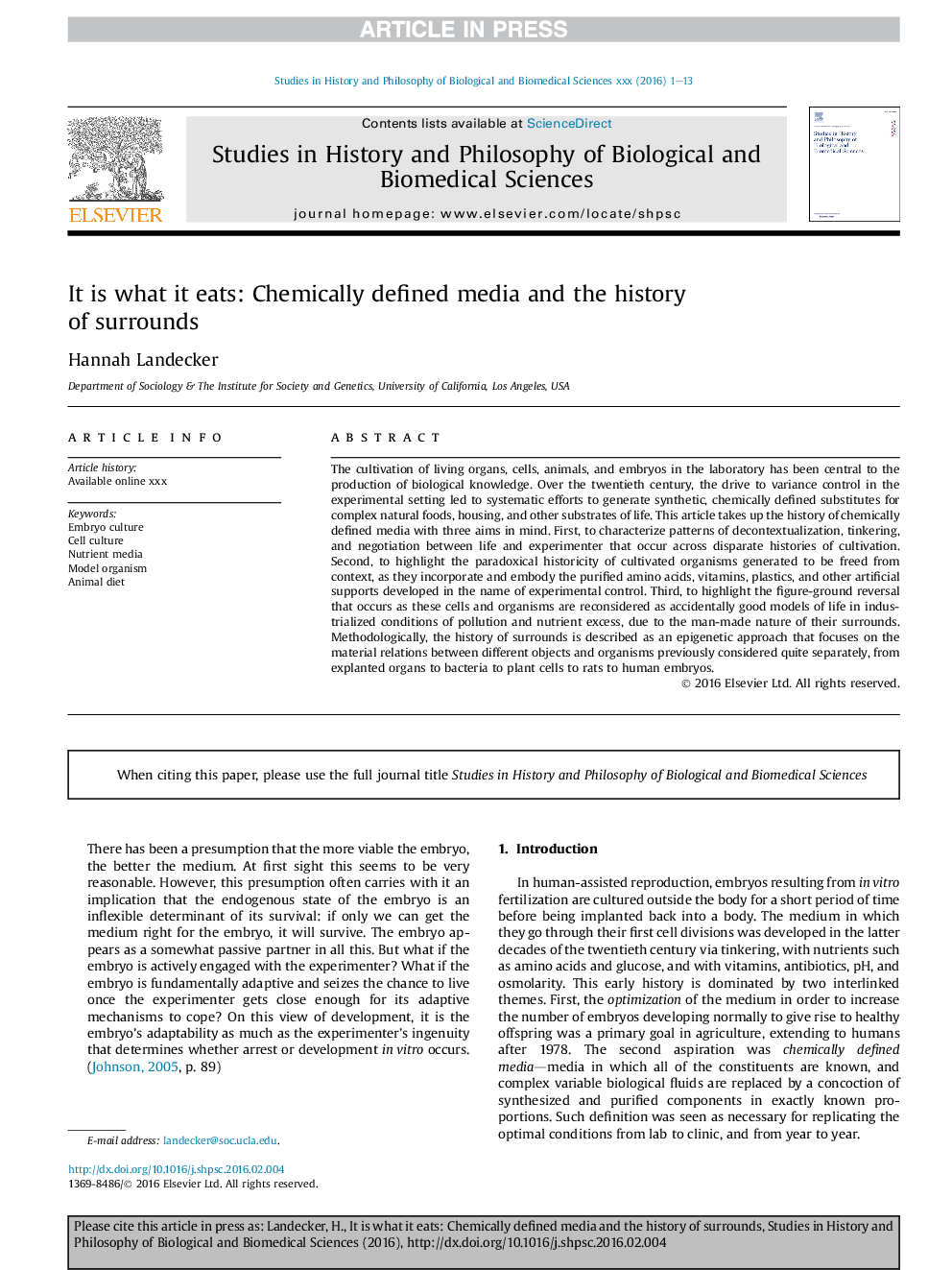| Article ID | Journal | Published Year | Pages | File Type |
|---|---|---|---|---|
| 7552265 | Studies in History and Philosophy of Science Part C: Studies in History and Philosophy of Biological and Biomedical Sciences | 2016 | 13 Pages |
Abstract
The cultivation of living organs, cells, animals, and embryos in the laboratory has been central to the production of biological knowledge. Over the twentieth century, the drive to variance control in the experimental setting led to systematic efforts to generate synthetic, chemically defined substitutes for complex natural foods, housing, and other substrates of life. This article takes up the history of chemically defined media with three aims in mind. First, to characterize patterns of decontextualization, tinkering, and negotiation between life and experimenter that occur across disparate histories of cultivation. Second, to highlight the paradoxical historicity of cultivated organisms generated to be freed from context, as they incorporate and embody the purified amino acids, vitamins, plastics, and other artificial supports developed in the name of experimental control. Third, to highlight the figure-ground reversal that occurs as these cells and organisms are reconsidered as accidentally good models of life in industrialized conditions of pollution and nutrient excess, due to the man-made nature of their surrounds. Methodologically, the history of surrounds is described as an epigenetic approach that focuses on the material relations between different objects and organisms previously considered quite separately, from explanted organs to bacteria to plant cells to rats to human embryos.
Related Topics
Life Sciences
Agricultural and Biological Sciences
Agricultural and Biological Sciences (General)
Authors
Hannah Landecker,
